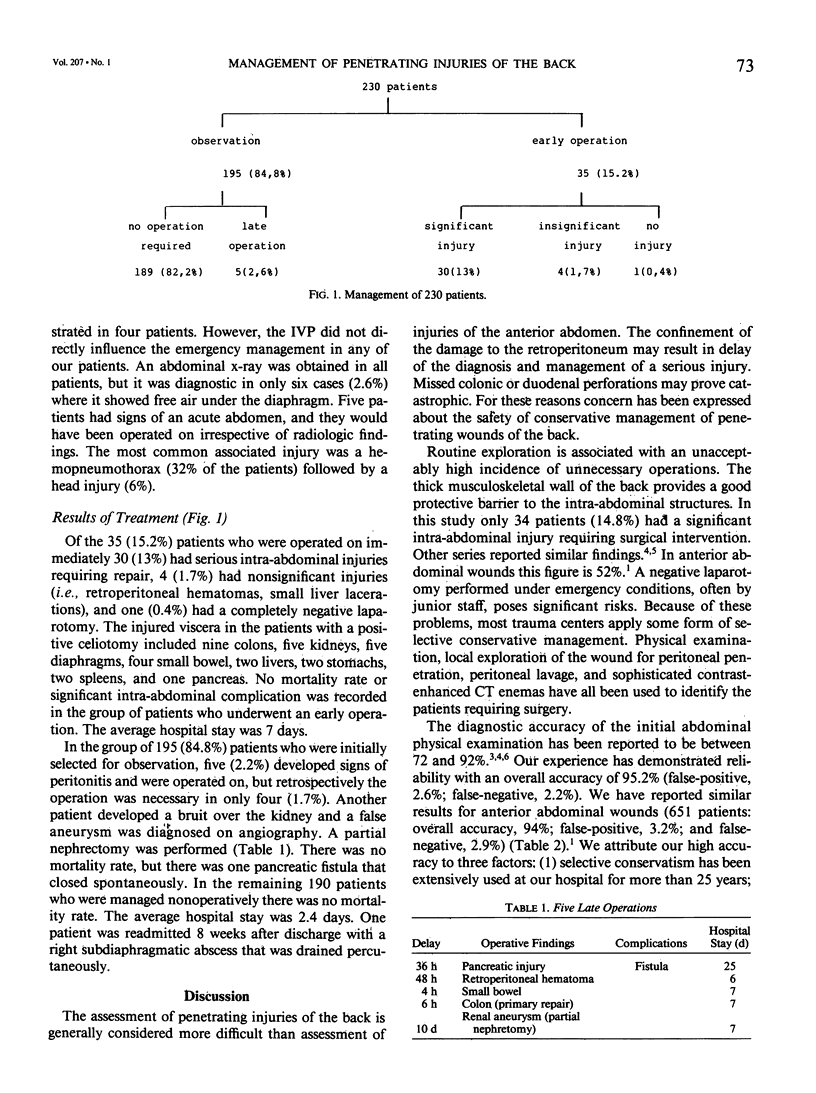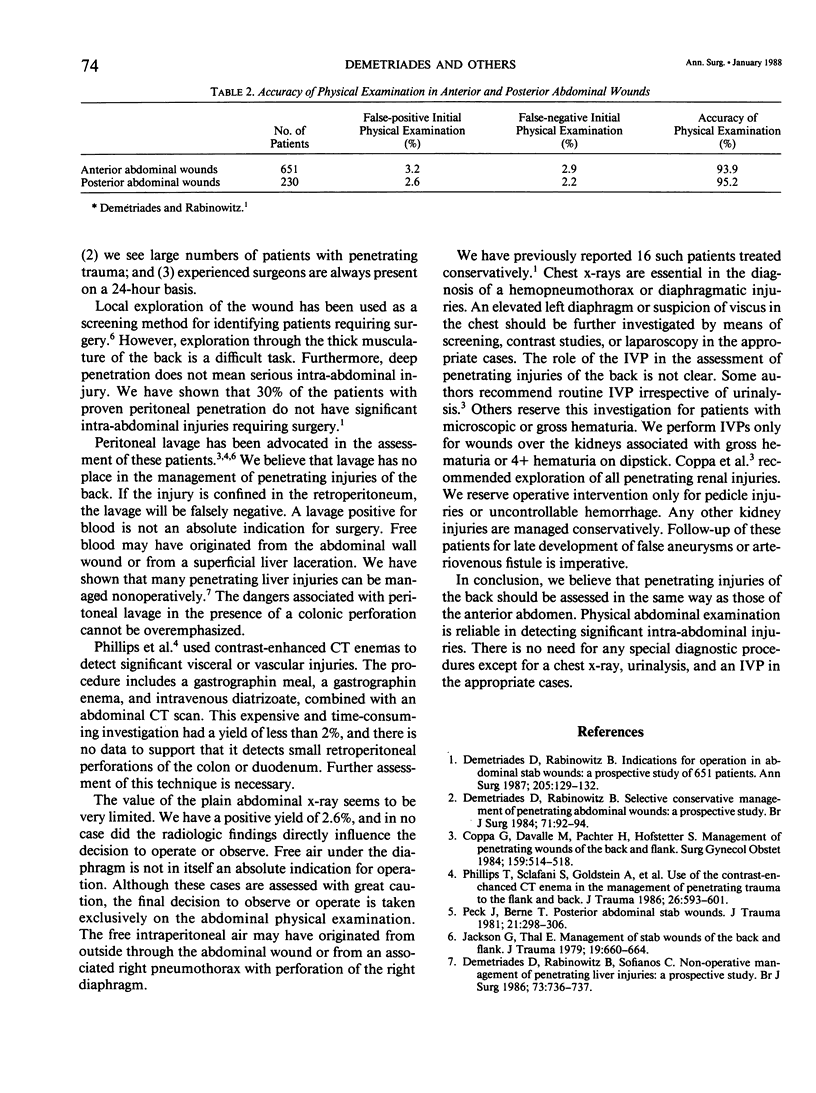Abstract
This is a prospective study of 230 patients with penetrating injuries of the back. The decision to operate or observe was taken exclusively on the abdominal physical findings. One hundred ninety-five patients (85%) did not require operation, 30 (13%) underwent a therapeutic laparotomy, four (1.7%) an unnecessary operation, and one patient (0.4%) had a completely negative laparotomy. The diagnosis and management was delayed in five (2.2%) patients with no serious consequences. Mortality rates were not recorded in this series. The initial physical examination was accurate in 95.2% of the patients. We suggest that penetrating injuries of the back should be assessed in the same way as anterior abdominal injuries. Physical abdominal examination is reliable in detecting significant intra-abdominal injuries.
Full text
PDF


Selected References
These references are in PubMed. This may not be the complete list of references from this article.
- Coppa G. F., Davalle M., Pachter H. L., Hofstetter S. R. Management of penetrating wounds of the back and flank. Surg Gynecol Obstet. 1984 Dec;159(6):514–518. [PubMed] [Google Scholar]
- Demetriades D., Rabinowitz B. Indications for operation in abdominal stab wounds. A prospective study of 651 patients. Ann Surg. 1987 Feb;205(2):129–132. doi: 10.1097/00000658-198702000-00005. [DOI] [PMC free article] [PubMed] [Google Scholar]
- Demetriades D., Rabinowitz B. Selective conservative management of penetrating abdominal wounds: a prospective study. Br J Surg. 1984 Feb;71(2):92–94. doi: 10.1002/bjs.1800710204. [DOI] [PubMed] [Google Scholar]
- Demetriades D., Rabinowitz B., Sofianos C. Non-operative management of penetrating liver injuries: a prospective study. Br J Surg. 1986 Sep;73(9):736–737. doi: 10.1002/bjs.1800730919. [DOI] [PubMed] [Google Scholar]
- Jackson G. L., Thal E. R. Management of stab wounds of the back and flank. J Trauma. 1979 Sep;19(9):660–664. doi: 10.1097/00005373-197909000-00004. [DOI] [PubMed] [Google Scholar]
- Peck J. J., Berne T. V. Posterior abdominal stab wounds. J Trauma. 1981 Apr;21(4):298–306. doi: 10.1097/00005373-198104000-00007. [DOI] [PubMed] [Google Scholar]
- Phillips T., Sclafani S. J., Goldstein A., Scalea T., Panetta T., Shaftan G. Use of the contrast-enhanced CT enema in the management of penetrating trauma to the flank and back. J Trauma. 1986 Jul;26(7):593–601. doi: 10.1097/00005373-198607000-00002. [DOI] [PubMed] [Google Scholar]


